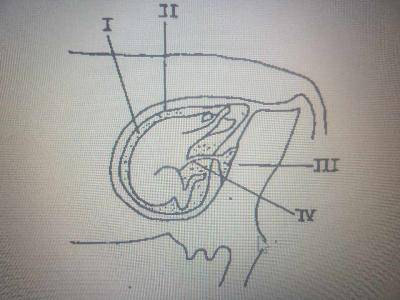
Agricultural Science Questions and Answers
A comprehensive list of Agricultural science questions with answers to help you prepare for JAMB, WAEC, NECO, Post UTME exams.

A comprehensive list of Agricultural science questions with answers to help you prepare for JAMB, WAEC, NECO, Post UTME exams.
The diagram above illustrates a reproductive process in a farm animal. Study it and answer the question.

The parts which protect the foetus from mechanical injury are labelled
I and III
I and II
III and IV
II and III
Correct answer is B
The parts which protect the foetus from mechanical injury are labelled I and II.
The diagram above illustrates a reproductive process in a farm animal. Study it and answer the question.

The reproductive process illustrated by the diagram is
Lactation
Gestation
Ovulation
Heat
Correct answer is B
Gestation refers to the period of pregnancy or the time it takes for female animals, particularly livestock, to carry and develop their offspring before giving birth.
A combine harvester is mainly used for harvesting
Tomato
Groundnut
Pepper
Rice
Correct answer is D
A combine harvester, also known as a combine, is mainly used for harvesting rice. A combine harvester is a versatile agricultural machine that combines several functions into one, making it efficient for harvesting various crops.
25ml
175ml
50ml
150ml
Correct answer is D
If 200 ml of water was poured onto a soil sample in a beaker and 25% of the water drained through the soil, it means that 75% of the water remains retained in the soil.
To find the amount of water retained in the soil, we can calculate 75% of the original 200 ml of water:
Amount of water retained = 0.75 (75%) * 200 ml = 150 ml
So, 150 ml of water is retained in the soil after 25% of the water has drained through.
Seedlings are best transplanted in the field
Early in the morning and late in the evening
At midday and at dusk
Early in the morning and at midday
Late in the morning and late in the evening
Correct answer is A
Transplanting seedlings is a critical step in the cultivation of crops. To ensure successful transplanting and minimize stress on the seedlings, it is recommended to do it early in the morning or late in the evening.